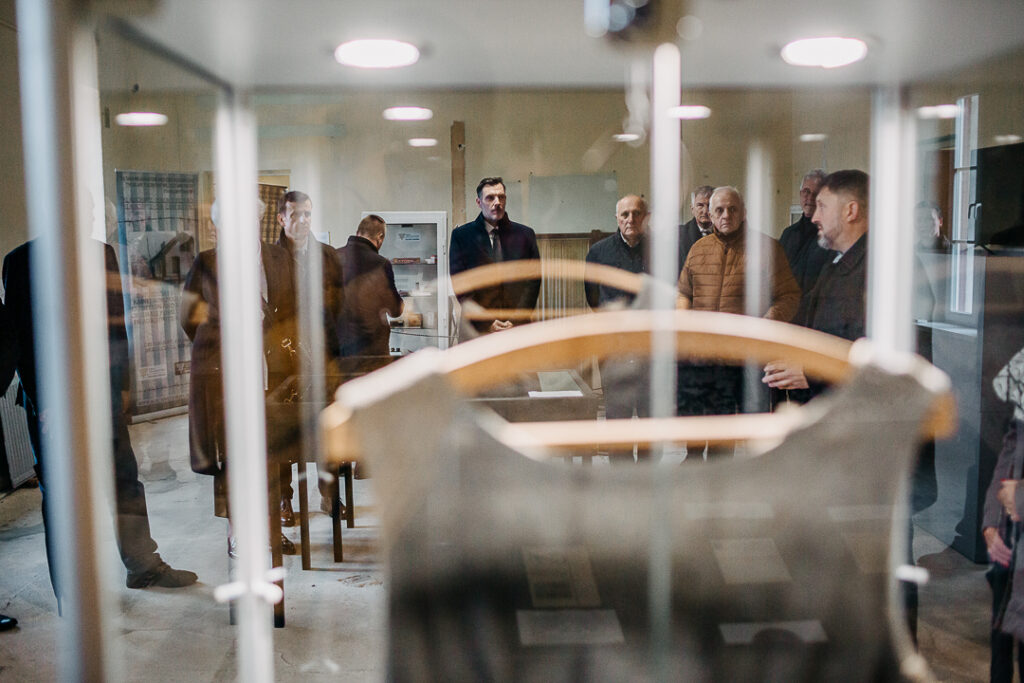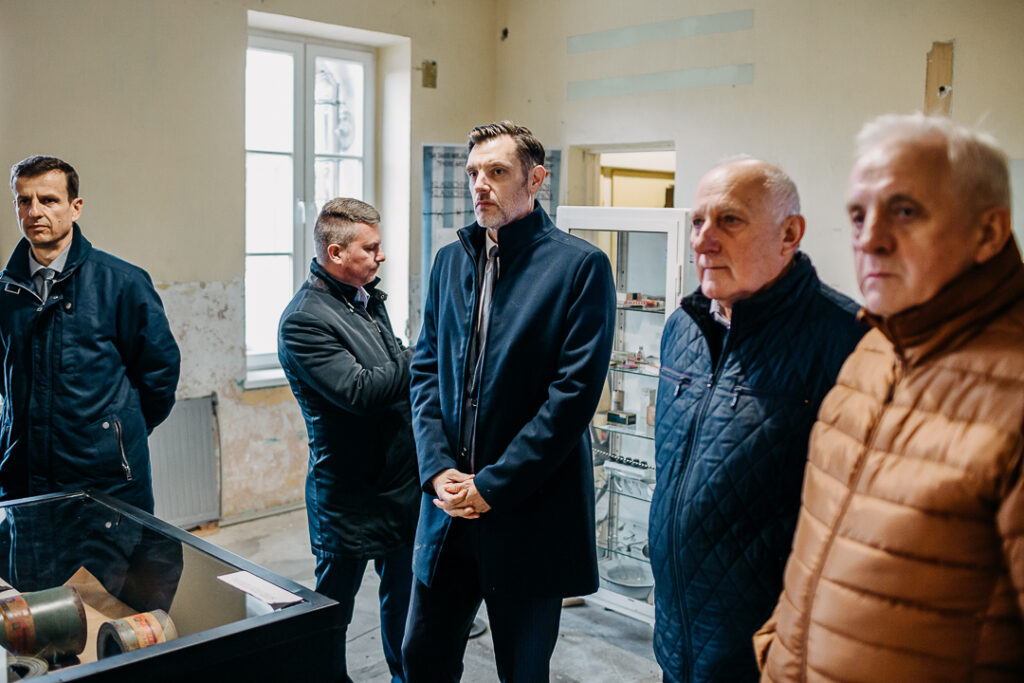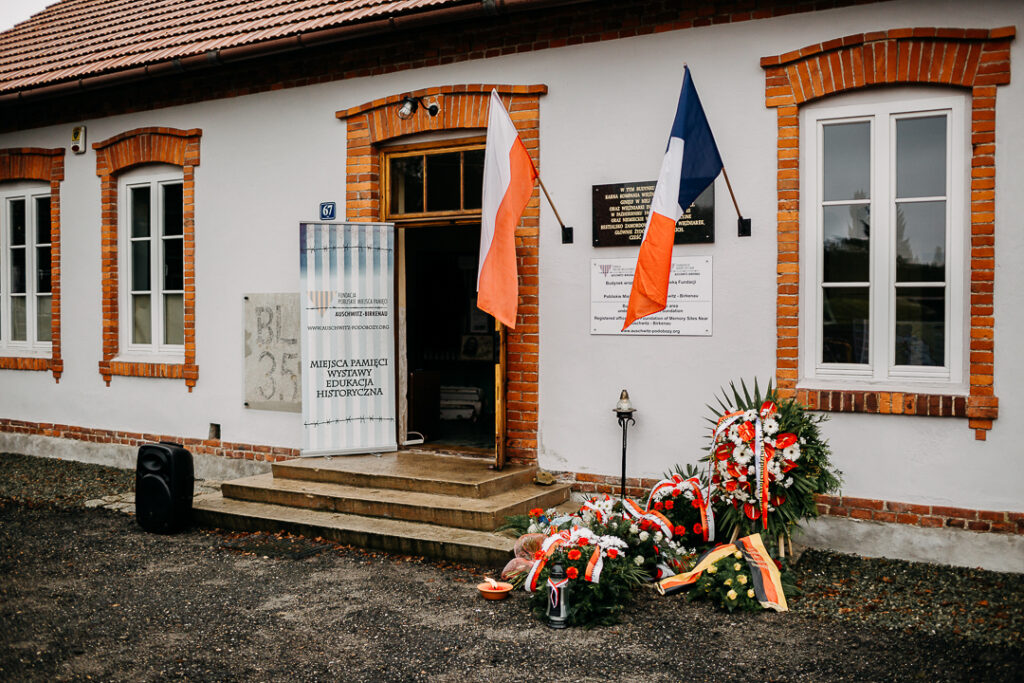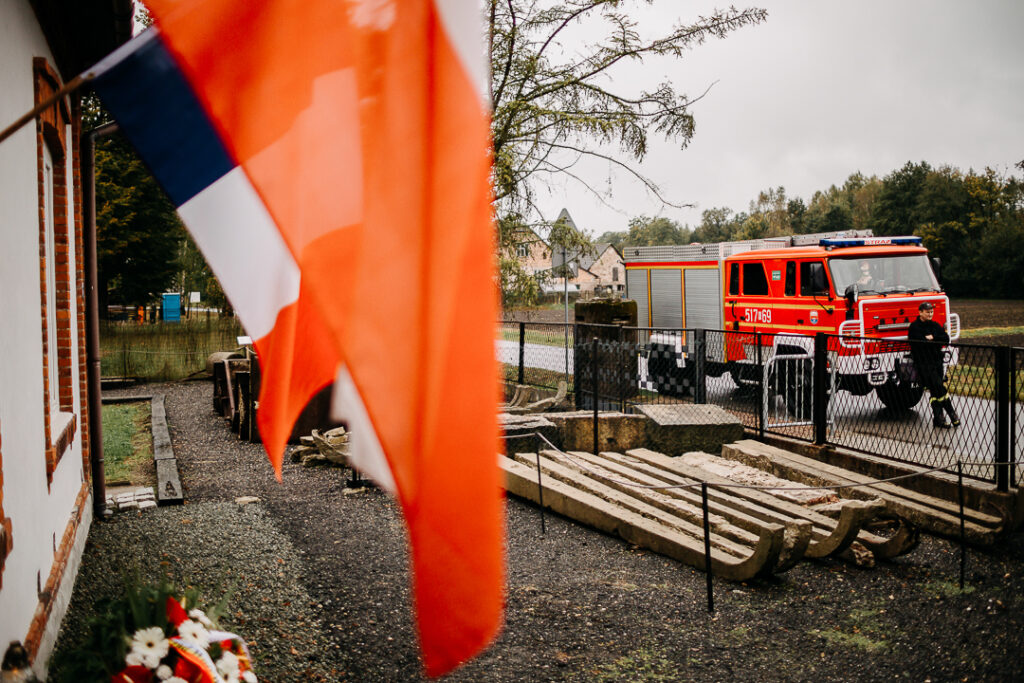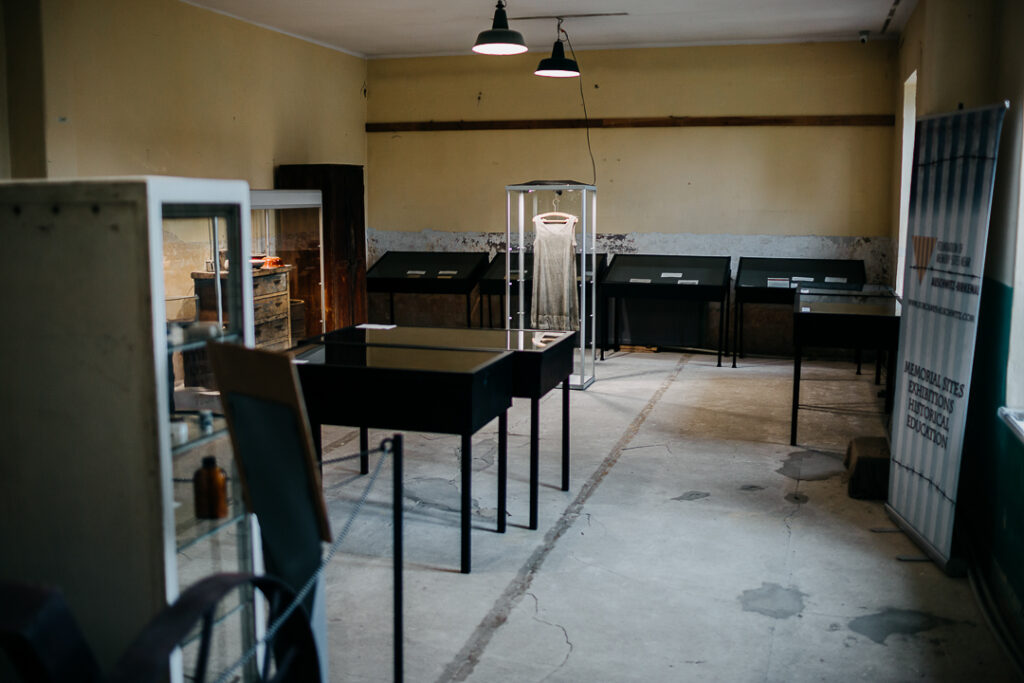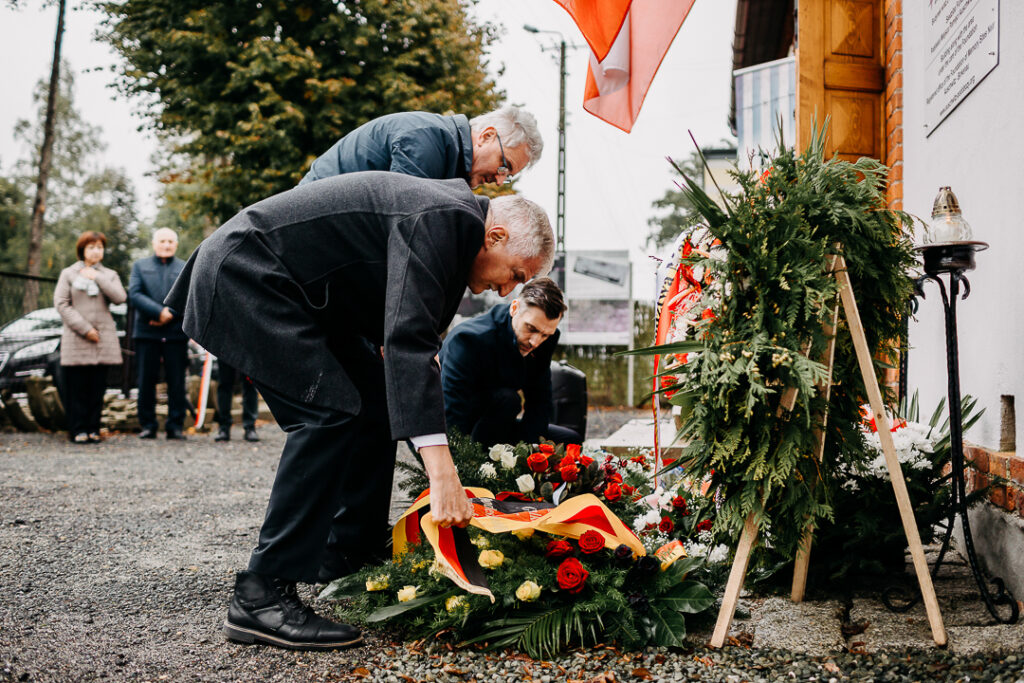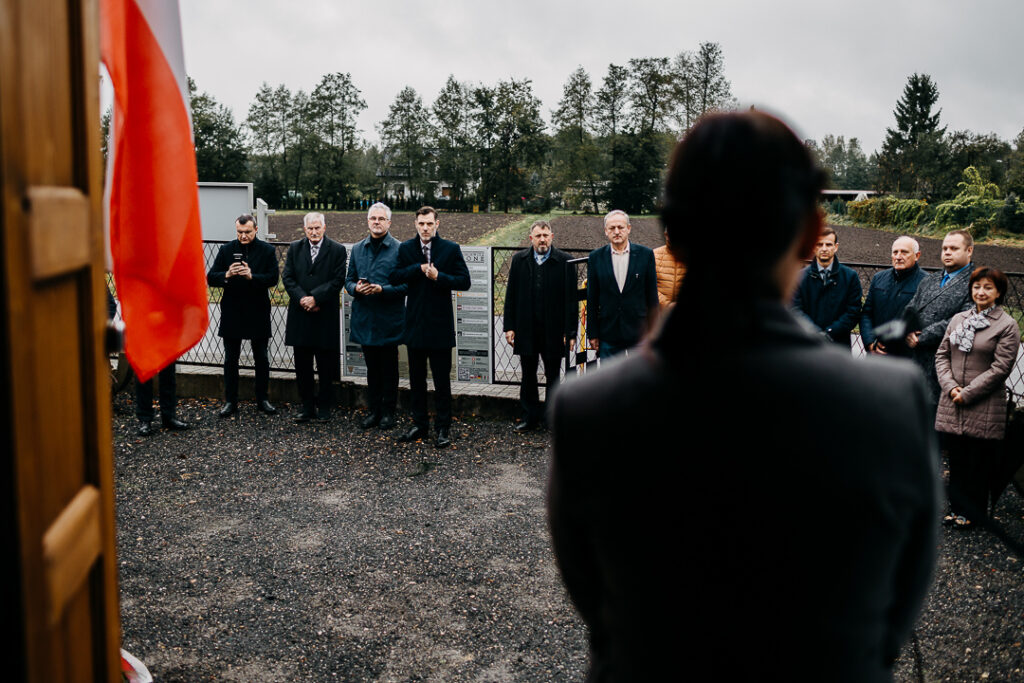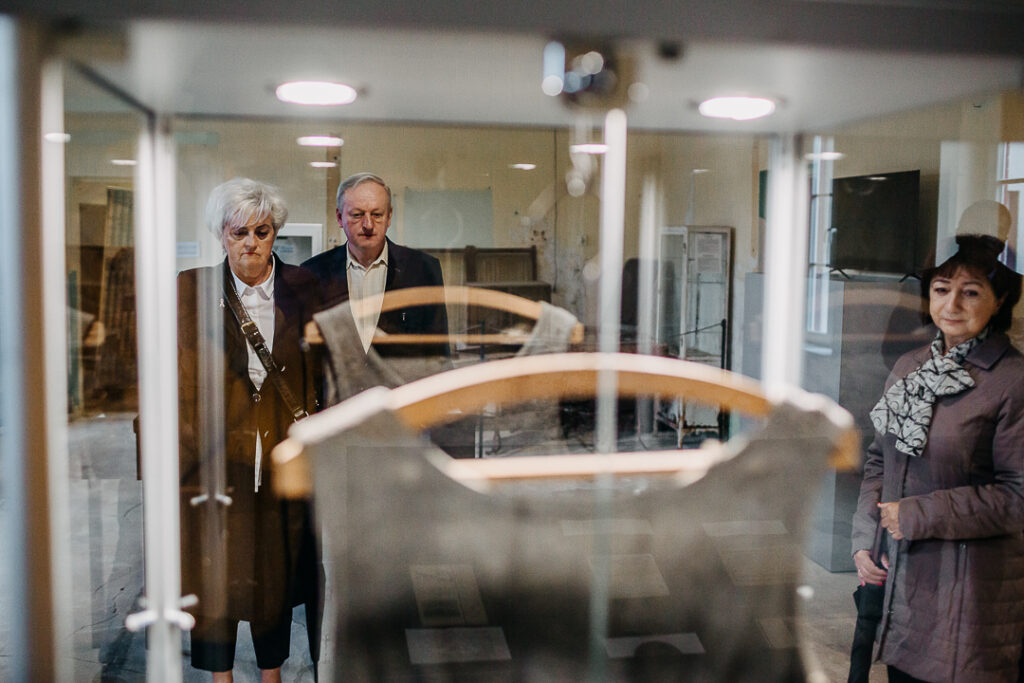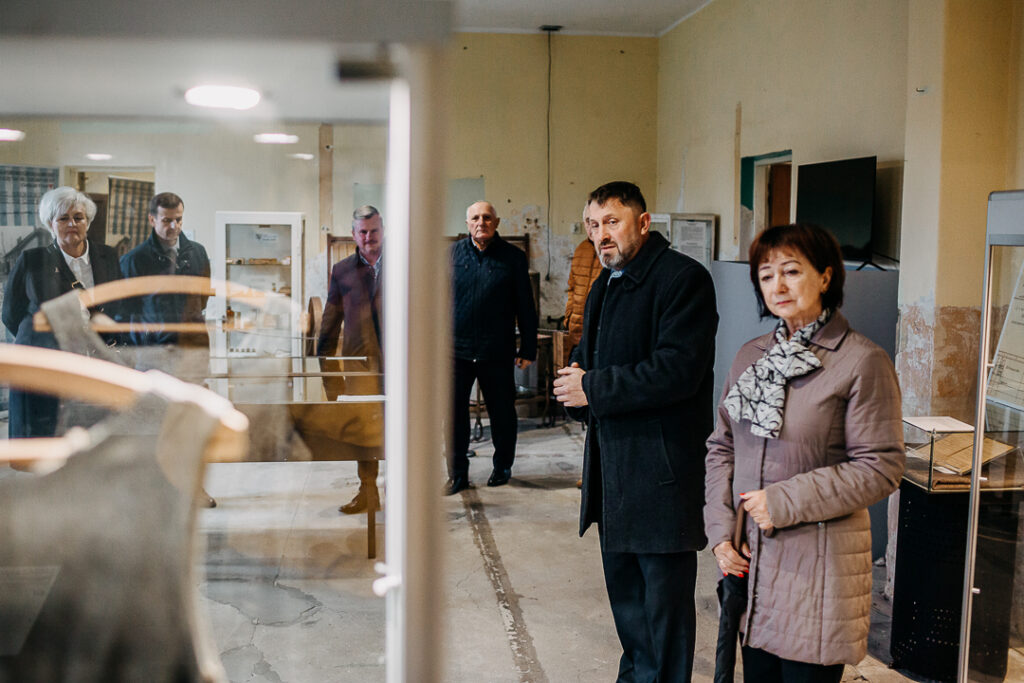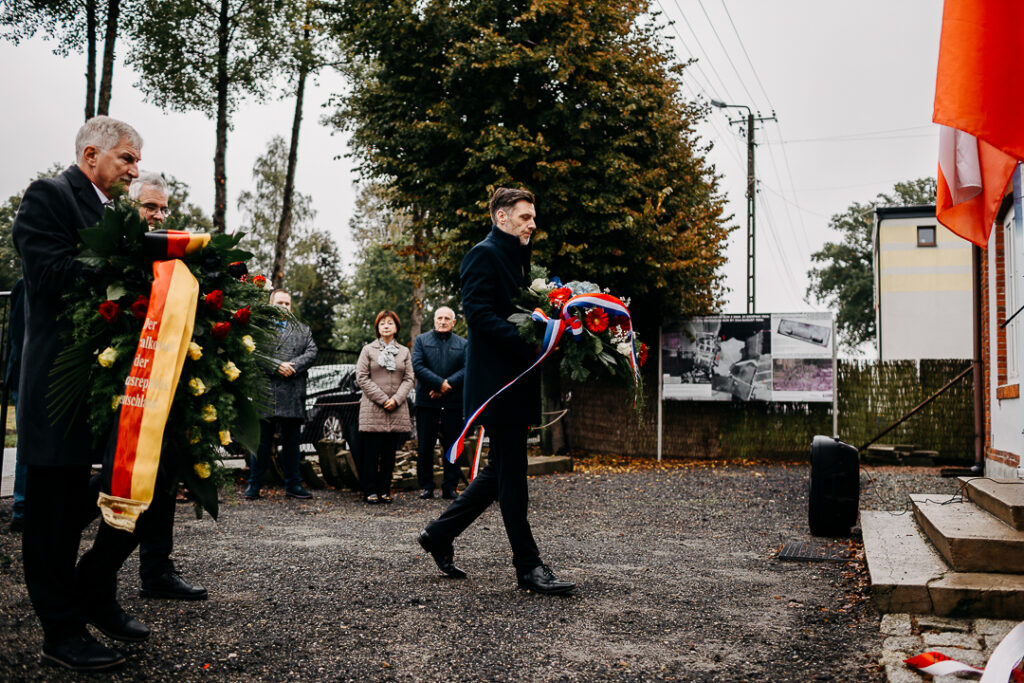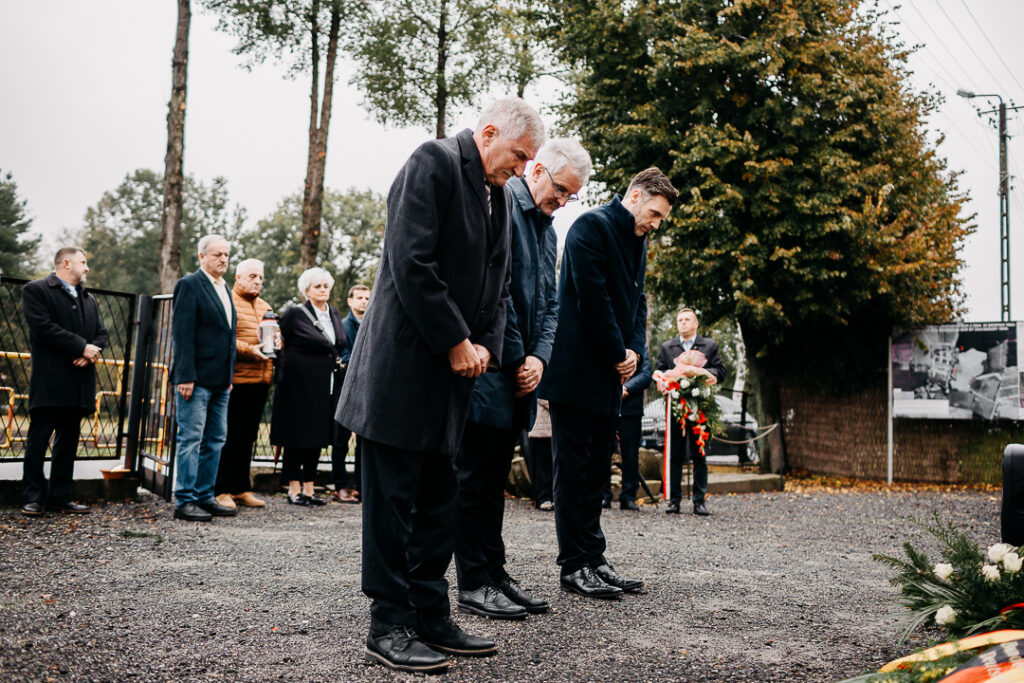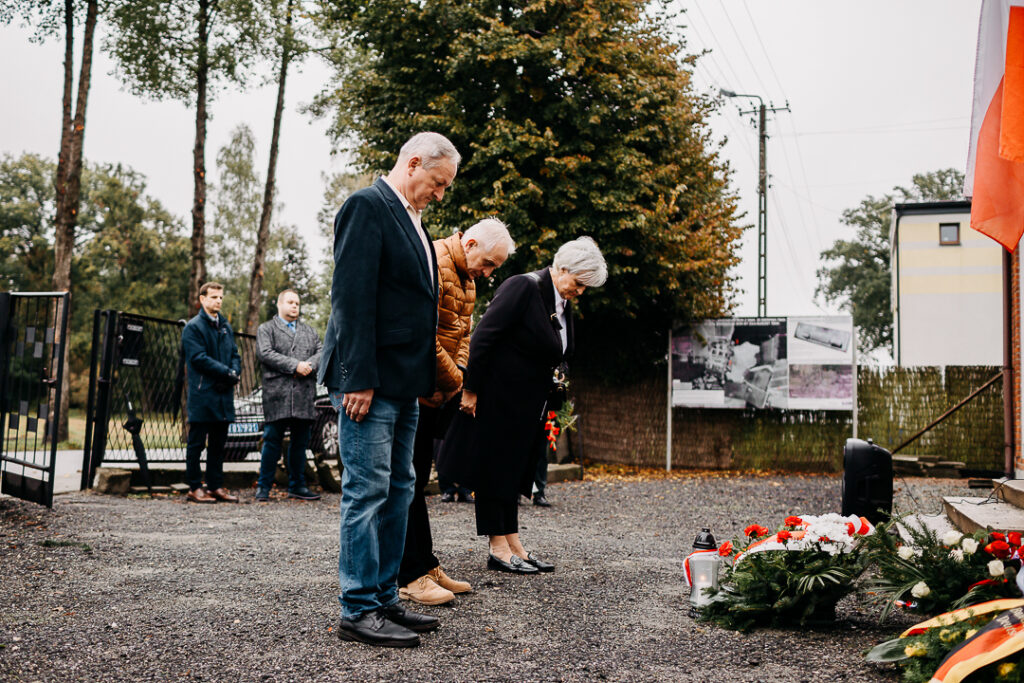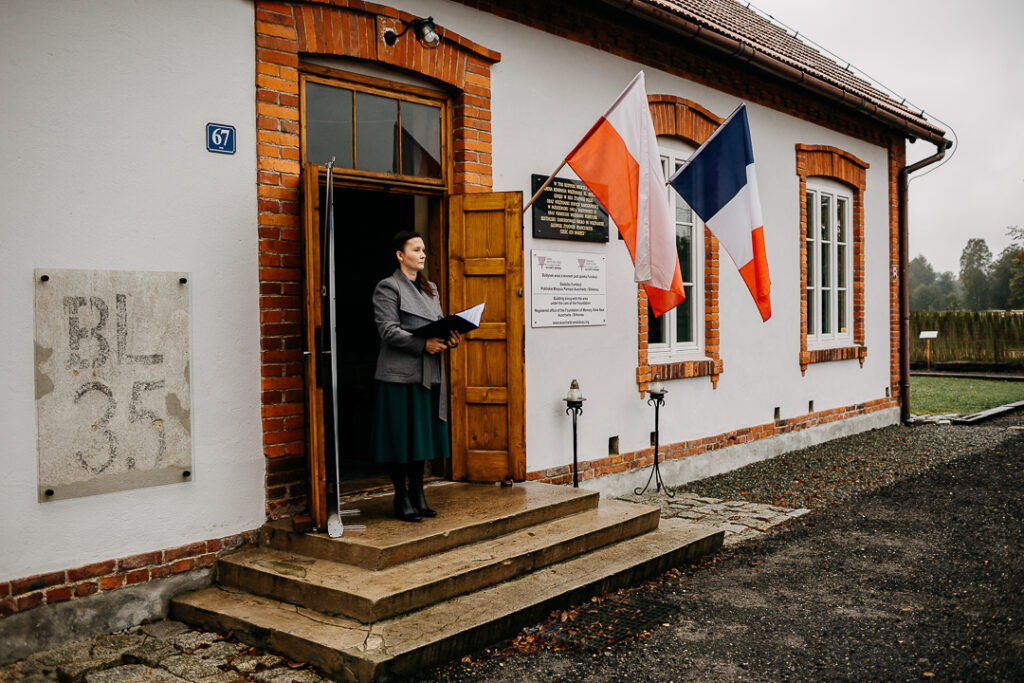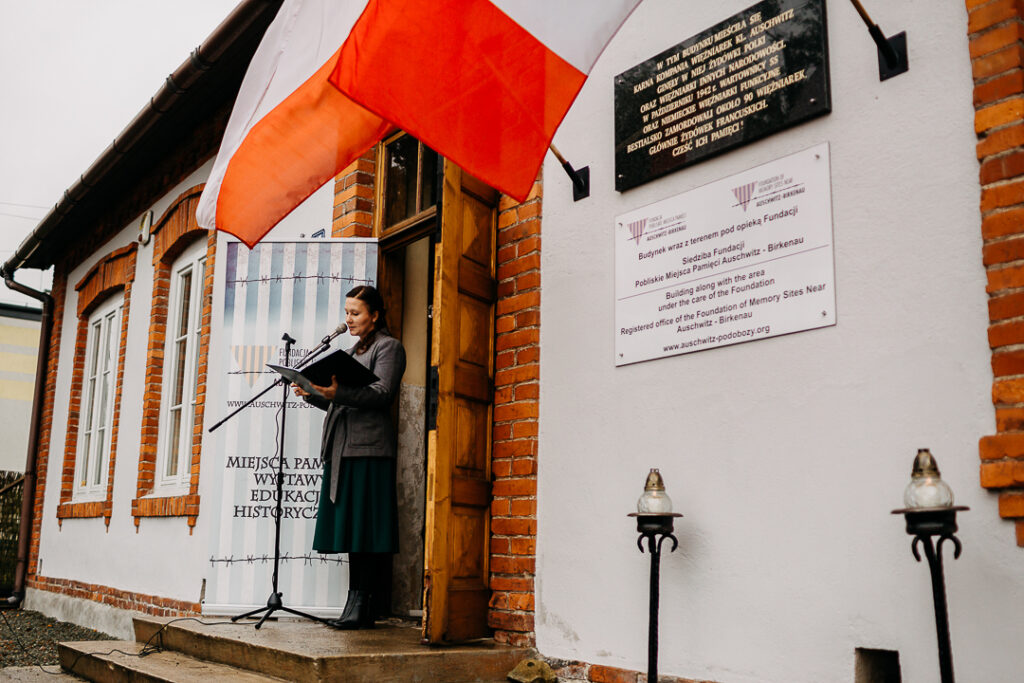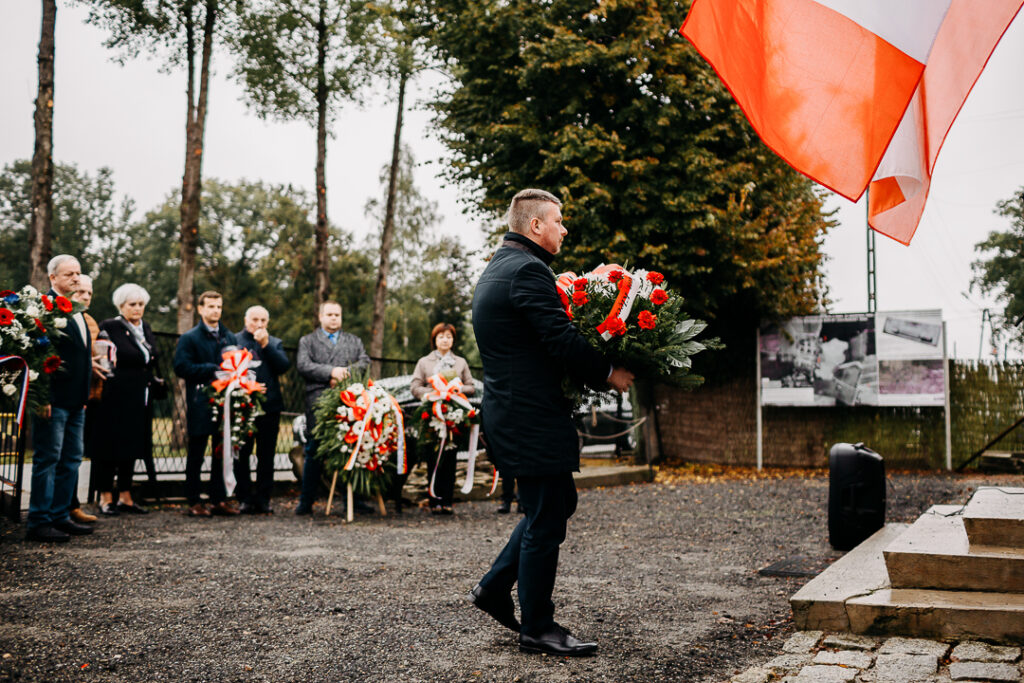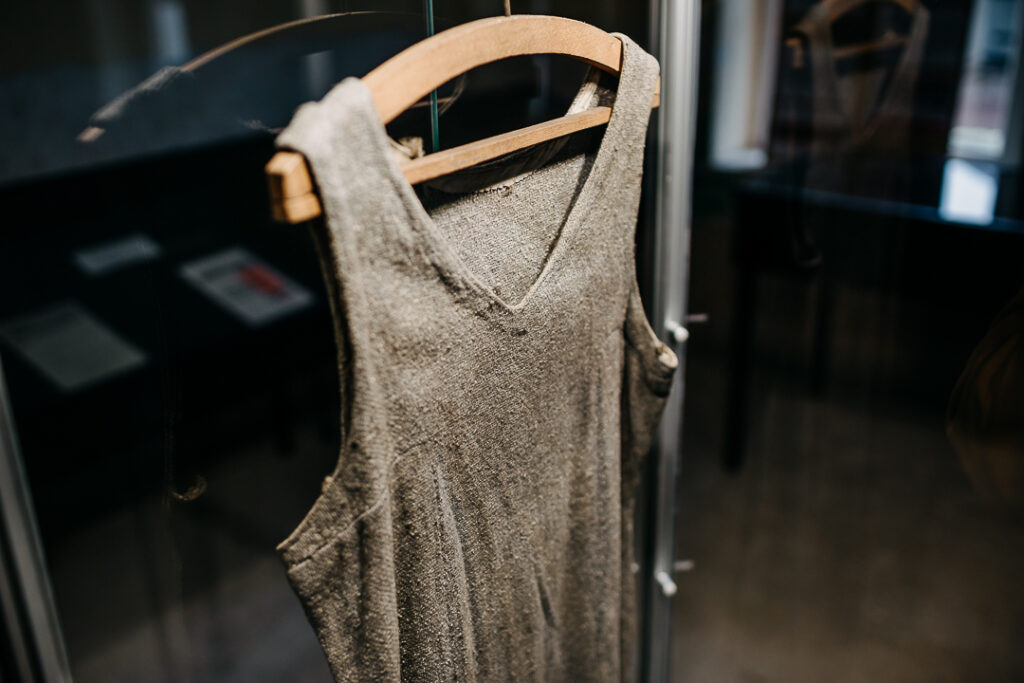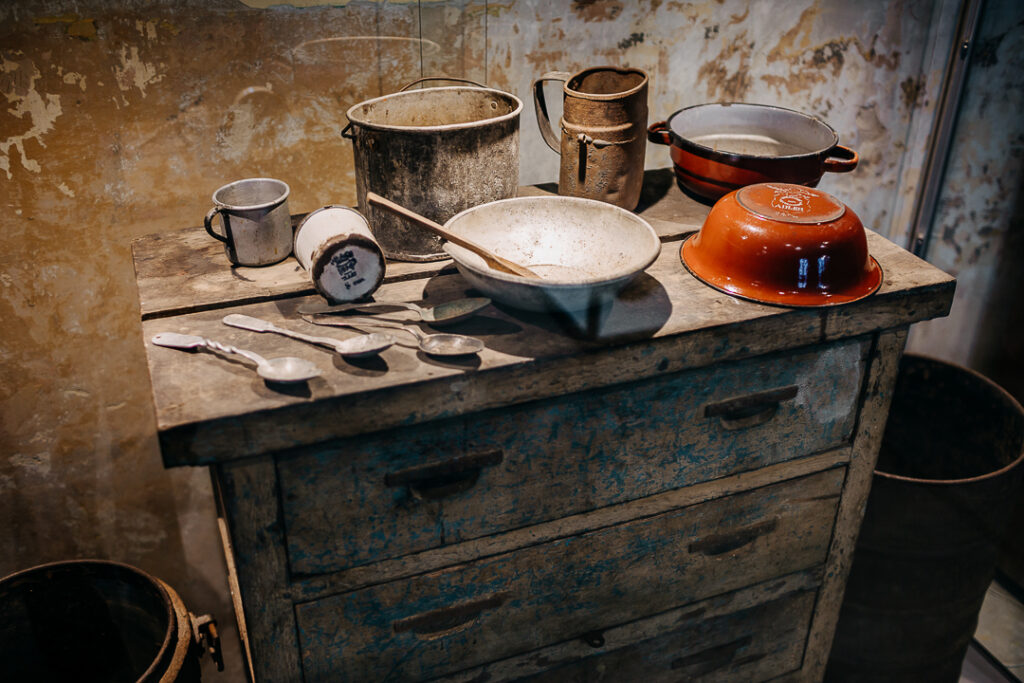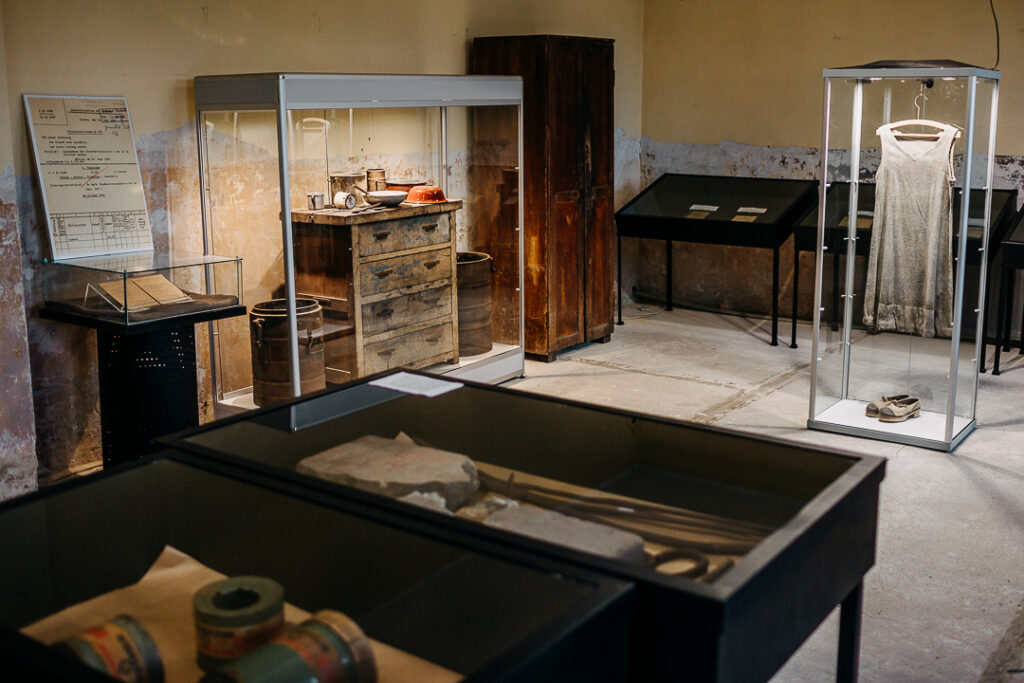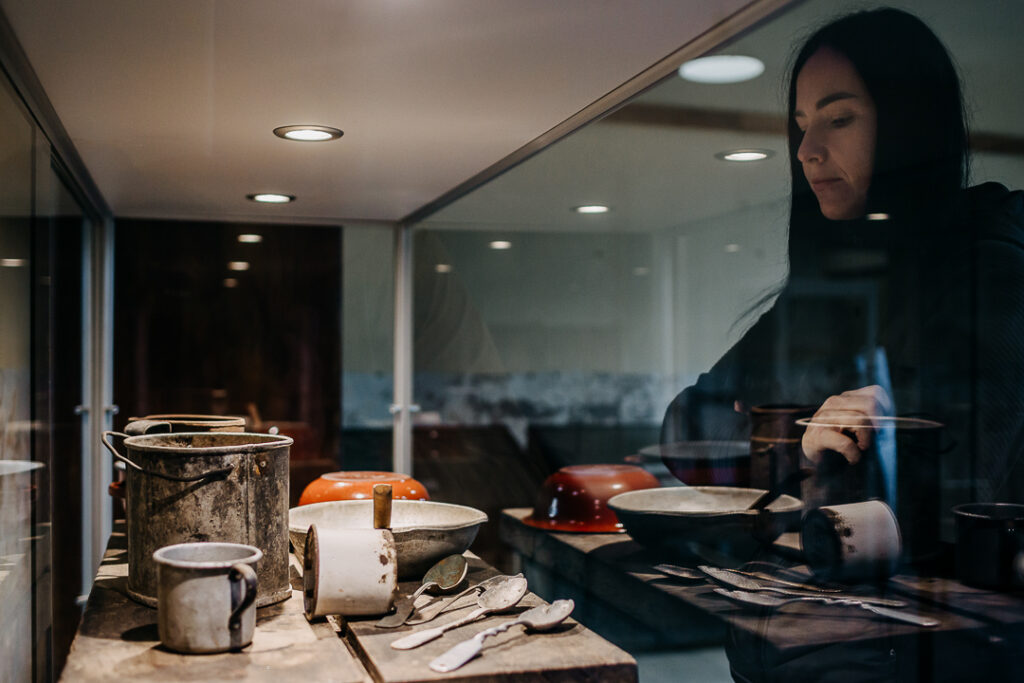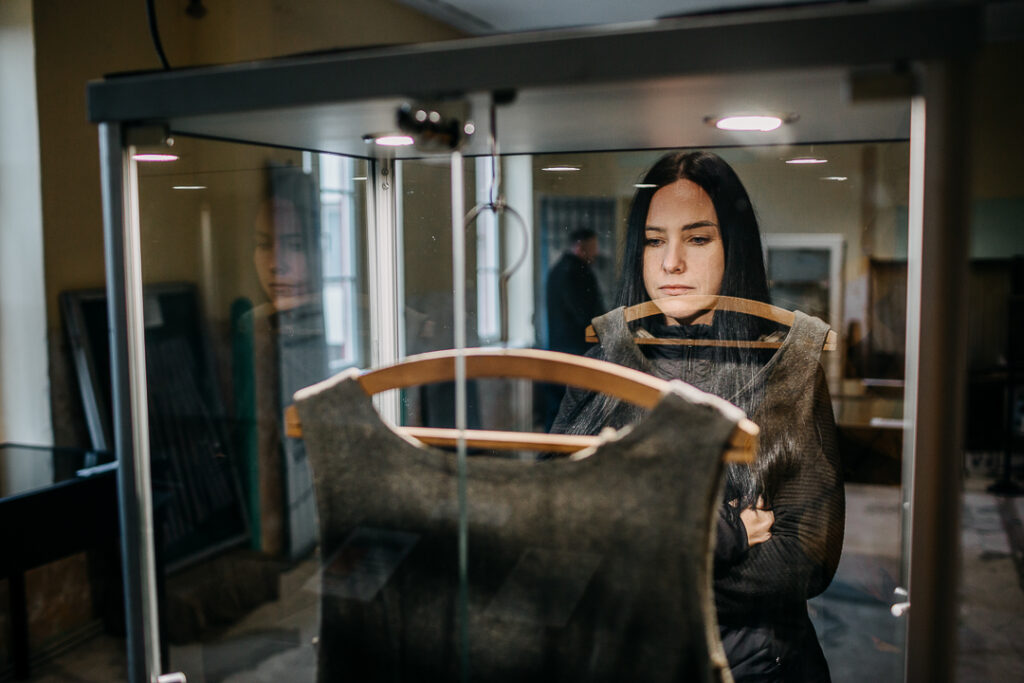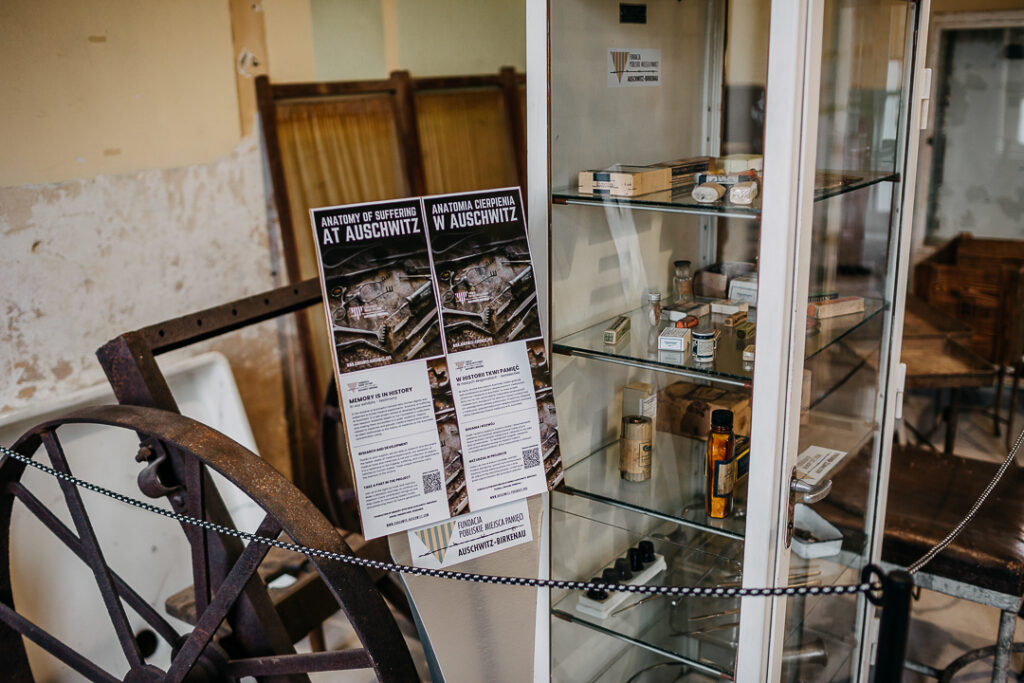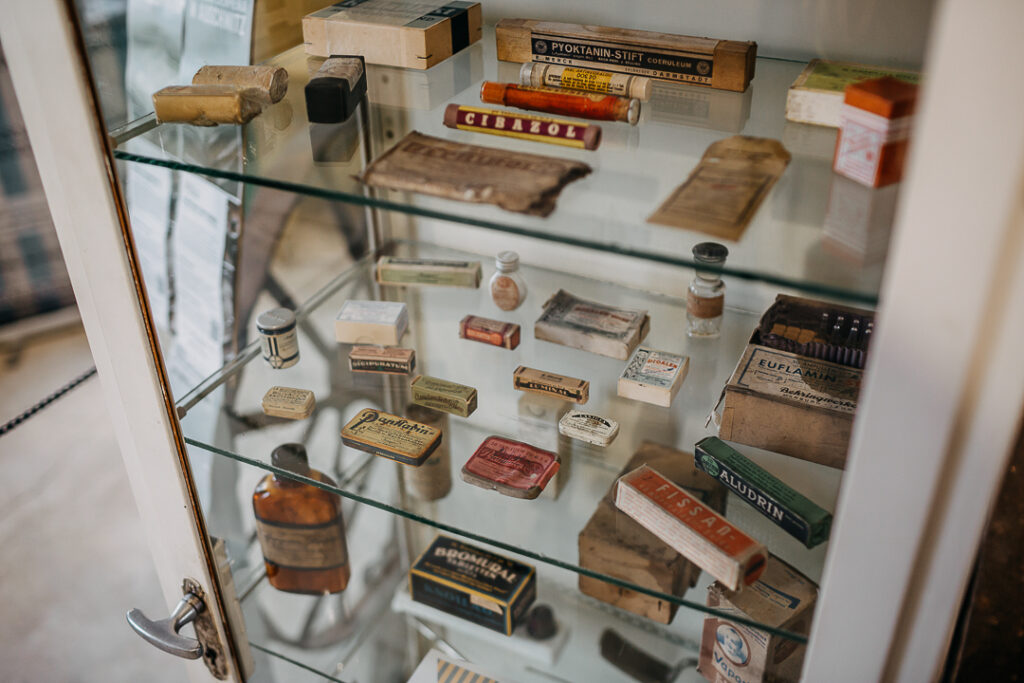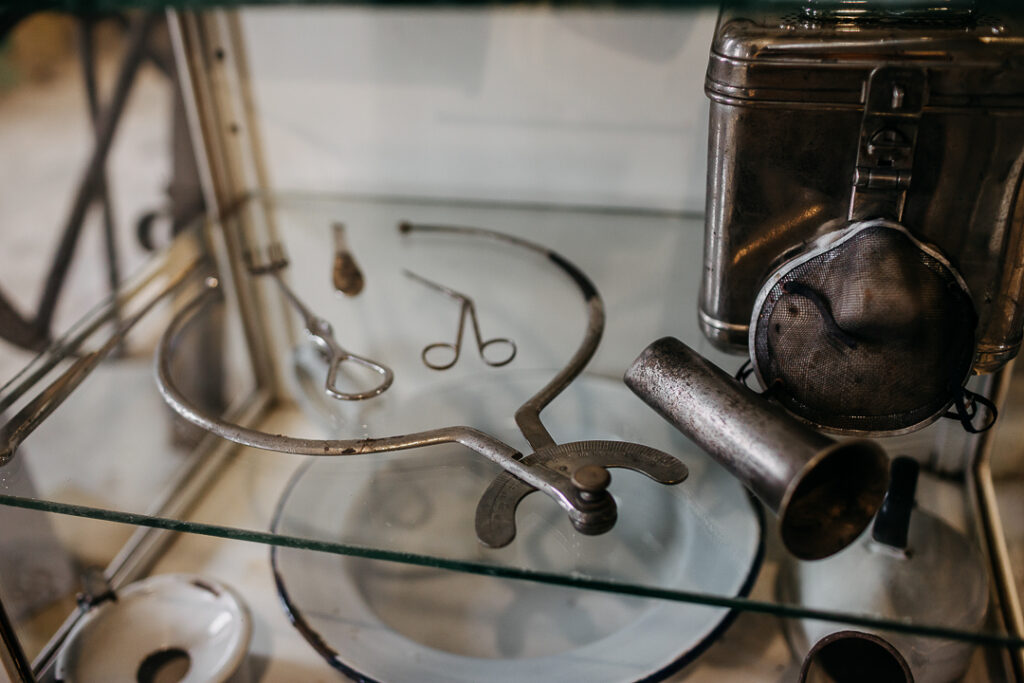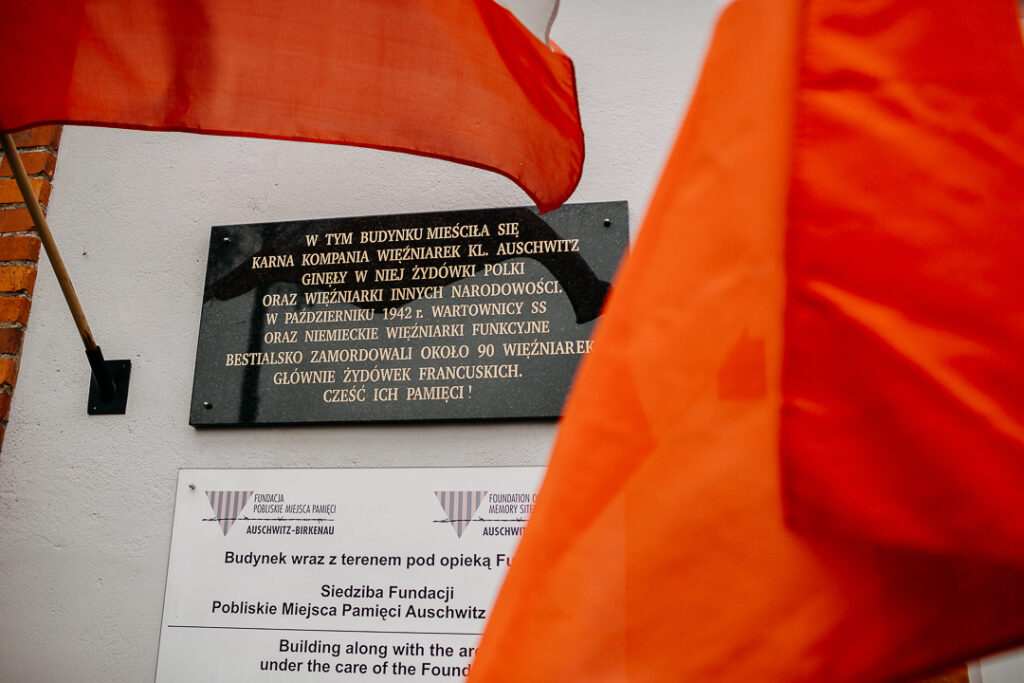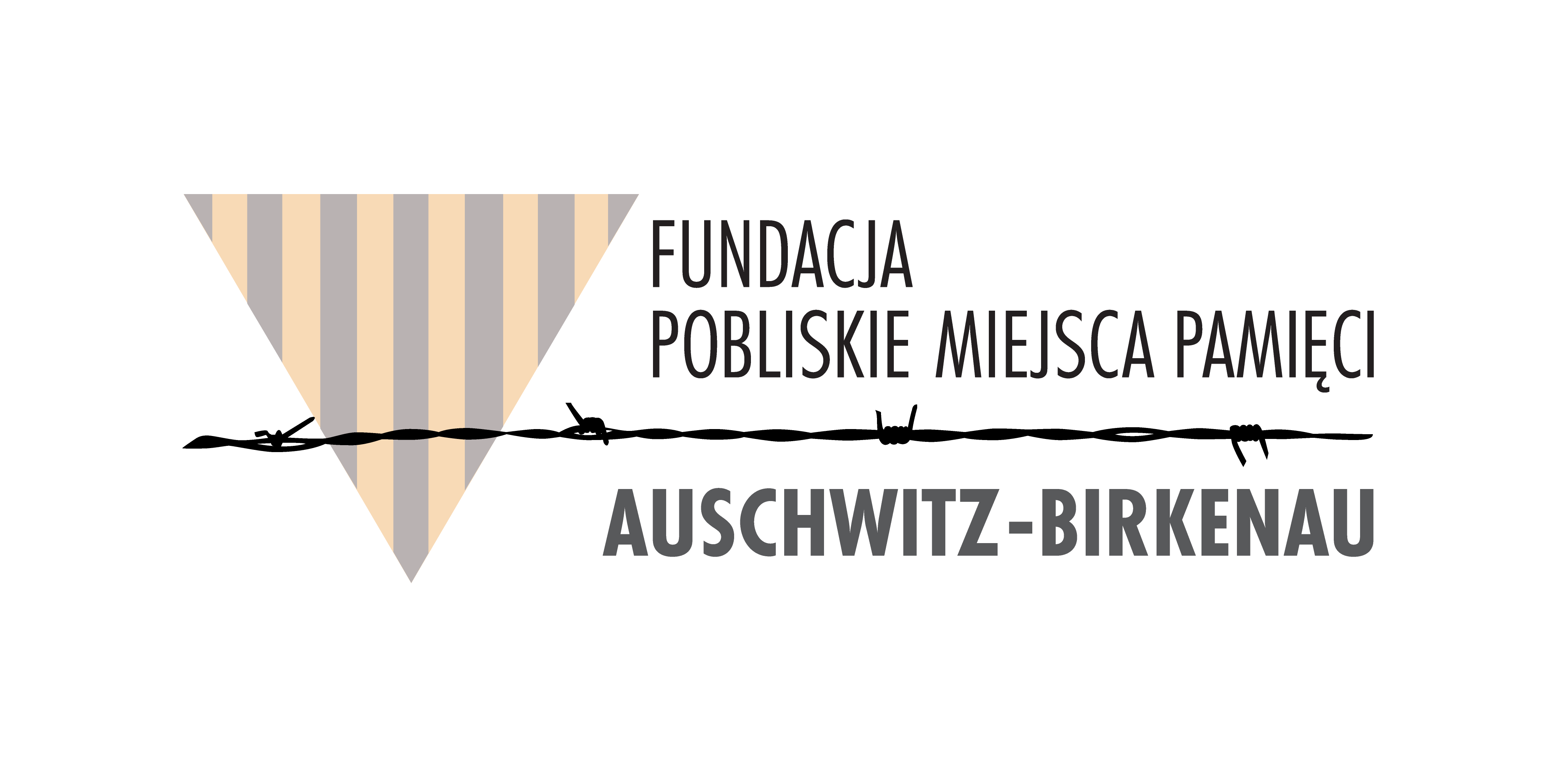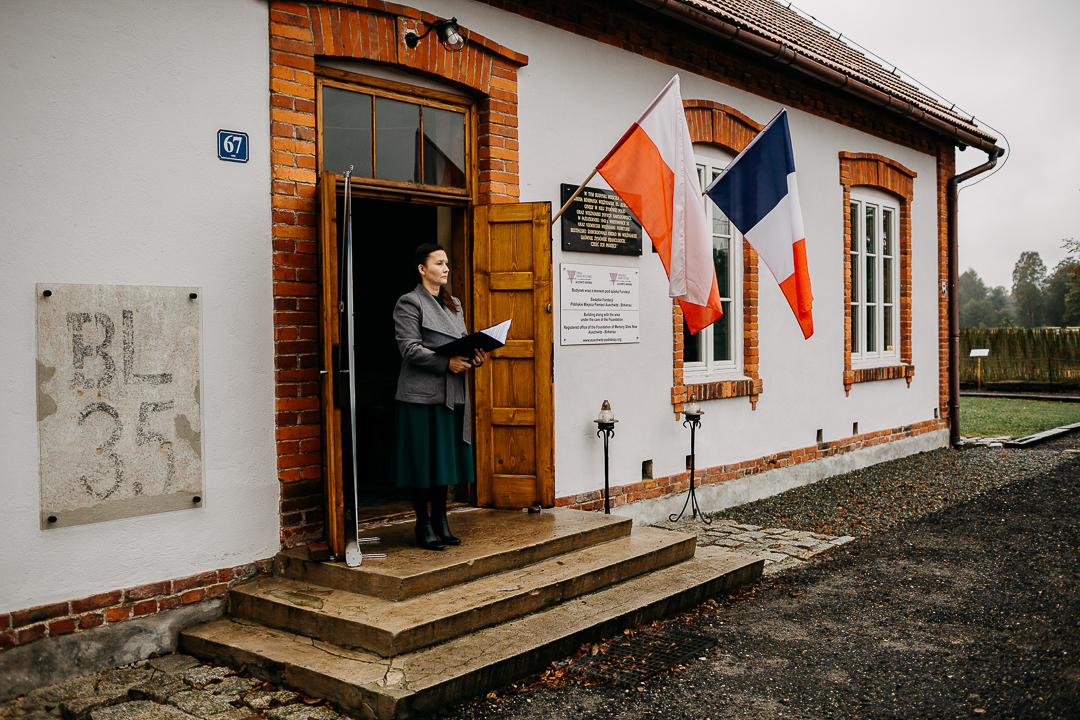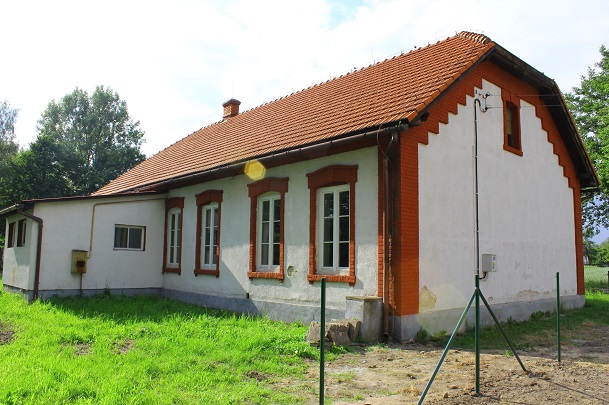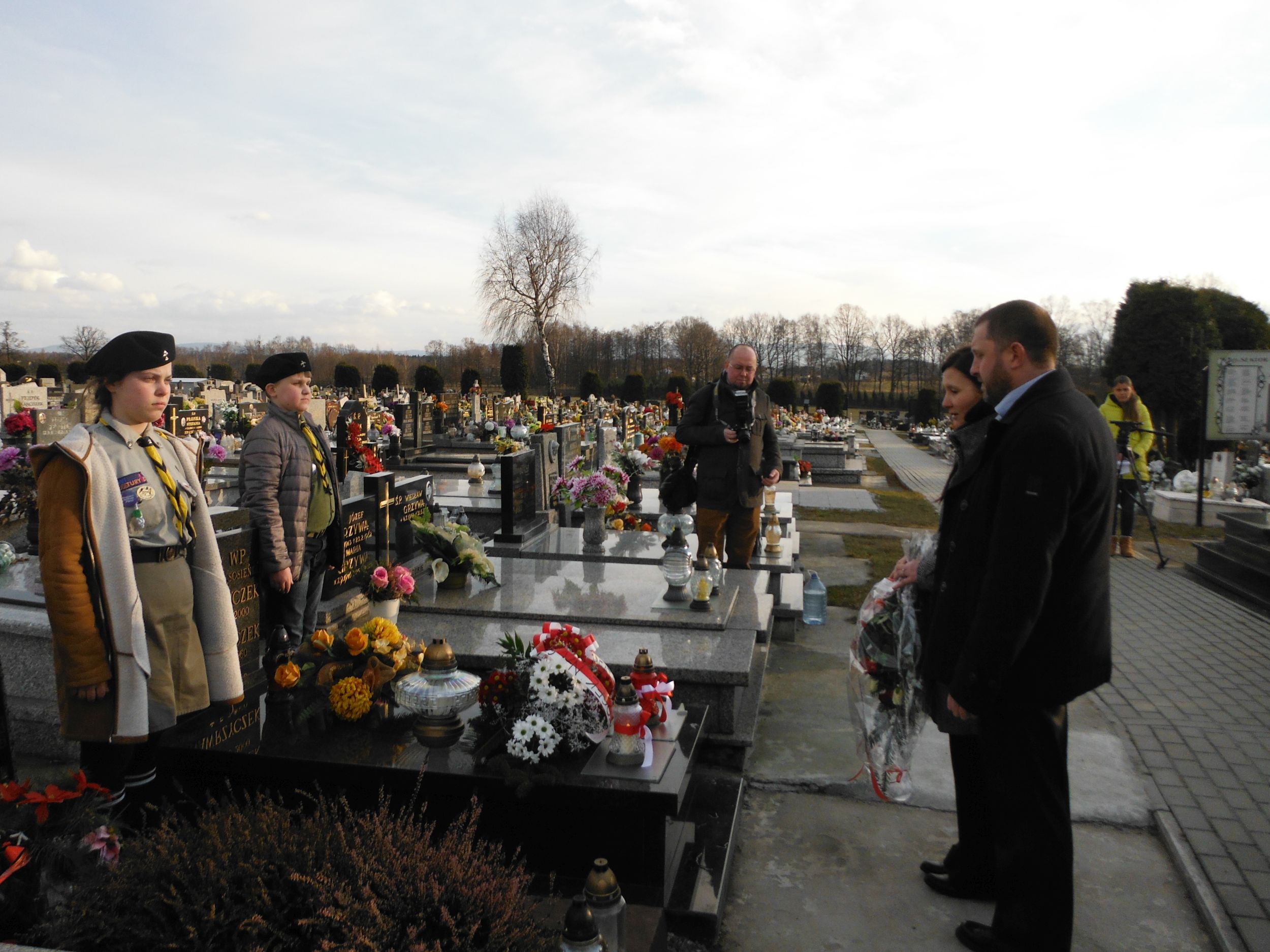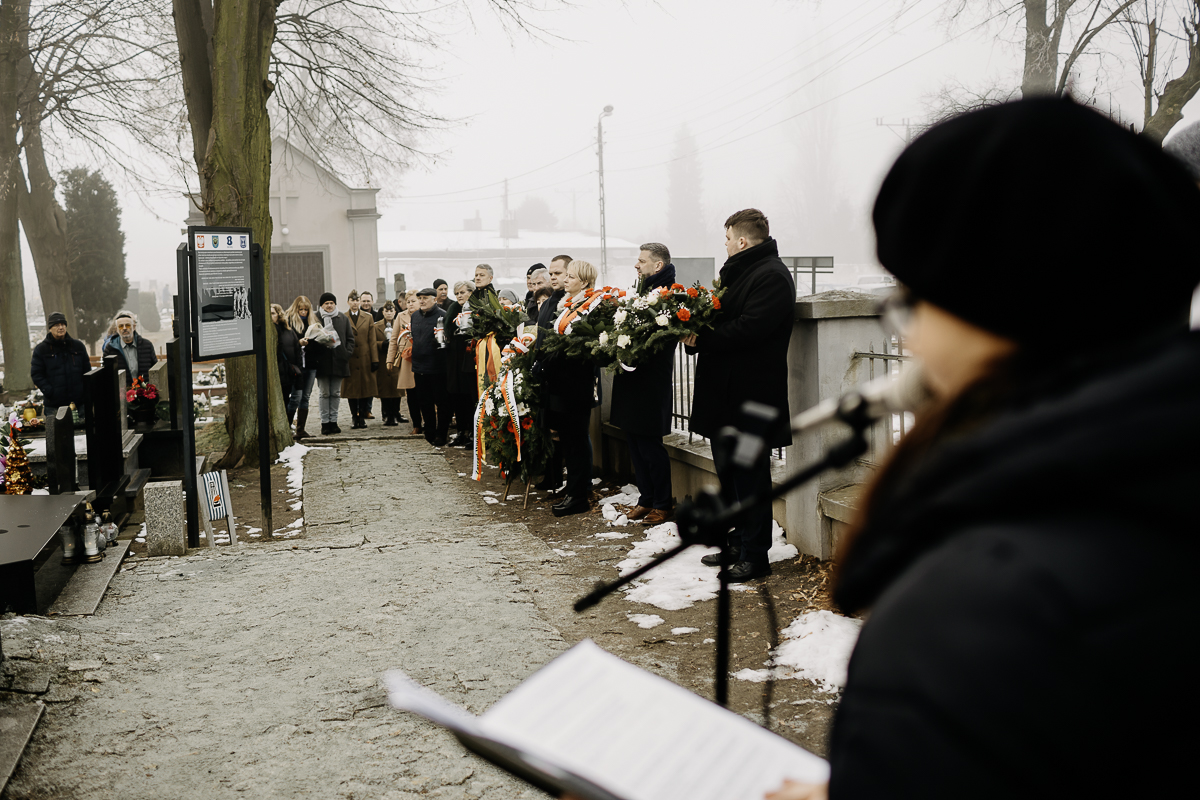On October 5, as every year, we commemorate the anniversary of the victims of the massacre of French Jewesses – Prisoners of the Penal Company of Women of the KL Auschwitz-Birkenau Bor / Budy sub-camp by symbolic laying of bunches and lighting candles, this is already the 82nd anniversary of these tragic events.
Let us recall the history of this event: the first female prisoners arrived at Frauen Strafkompanie Bor / Budy in June 1942, two months later the women who were still alive were sent to KL Birkenau. The next prisoners from KL Auschwitz were sent to the Karna Kompania Bor / Budy on July 25, 1942, they were young French Jewish female prisoners who were treated by the SS as communists, and this group also included several Polish women from emigration to France. They were accommodated in the school building, just like the previous group of Polish women, they were placed partly in the rooms on the ground floor and in the attic of the building. On the night of October 5, 1942, six german female functionaries Capo (including Elfriede Schmidt – called “the queen of the ax”), together with the SS men guarding the Penal Company from outside the fence, committed crimes against French prisoners staying in the building. A fight ensued that turned into a beastly, inhuman massacre. About 90 women prisoners died at the hands of Capo and SS men using truncheons, axes and similar tools. Their massacred bodies were loaded onto trucks the next day and taken to one of the KL Birkenau crematoria.
The investigation carried out by the camp Gestapo on the orders of the Commander Rudolf Hoss himself, which was documented in photographs by one of the camp prisoners Wilhelm Brasse (prisoner number 3444) at the request of the SS men, was discontinued, and all evidence was already erased at that time . The commander ordered the negatives to be destroyed, leaving only one copy – perhaps these photos have survived and are still in someone’s hands.
We know the historical course of this brutal event, but unfortunately they are still the nameless victims of the KL Auschwitz and the Holocaust. No post-camp documentation known to us has survived, which would allow us to compile a list of names not only of these women – prisoners from this massacre, but also of all victims of the KL Auschwitz-Bor / Budy sub-camp.
During the ceremony, wreaths and flowers were laid and candles were lit by the following persons and delegations:
Of the Małopolska Voivode, Mr. Krzysztof Jan Klęczar flowers were laid by Mr. Marcin Przewoźniak Deputy Director of the Revalorisation of Krakow Monuments and National Heritage of the Małopolska Voivodeship Office in Krakow, of the On behalf of the Board of the Małopolska Province and Mrs. Iwona Gibas, flowers were laid Mr. Jakub Przewoźnik, Head of the Office’s Local Agenda Marshal of the Małopolska Province, Deputy Mayor of Brzeszcze, Mr. Łukasz Kobielusz, Chairman of the City Council in Brzeszcze Mrs. Danuta Socha with the Councilor Mr. Jacek Wawro and Mr. Krzysztof Bielenin and Mr. Sławomir Drobny, Deputy Mayor of the Oświęcim Commune Mrs. Halina Musiał, Consul General of of France Cedric Peltier, Consul General of Germany Mr Holger Mahnicke, Consul General of of Austria Mr.Martin Gärtner, Director of the Institute of National Remembrance Kraków Branch Mr. dr. Hab.Filip Musiał , Delegation of the Self-government Community of the Brzeszcze Commune in the Mr. Maciej Puzoń
The organizers of the ceremony were the Mayor of Brzeszcze, Mr. Radosław Szot and the Foundation of Memory Sites Near Auschwitz-Birkenau. Medical and technical protection of the Volunteer Fire Department in Brzeszcze Bór.
After the official part, the participants visited the historical exhibition in the building housing the prisoners of the Penal Company of Women. Today, for the first time, we presented a unique item from the collections under the care of our Foundation. It is an original camp dress sewn from a gray prisoner blanket. We do not know the number or identity of the prisoner who wore it. The dress shows signs of reparation, it must have been heavily worn during work in the camp, at the bottom of the dress there is an insert from another blanket slightly different in color and weave from the original. This dress is a silent witness to the tragic fate of the prisoners in this huge camp complex of KL Auschwitz-Birkenau, it is a very personal item that is a small substitute for femininity in this camp hell.

